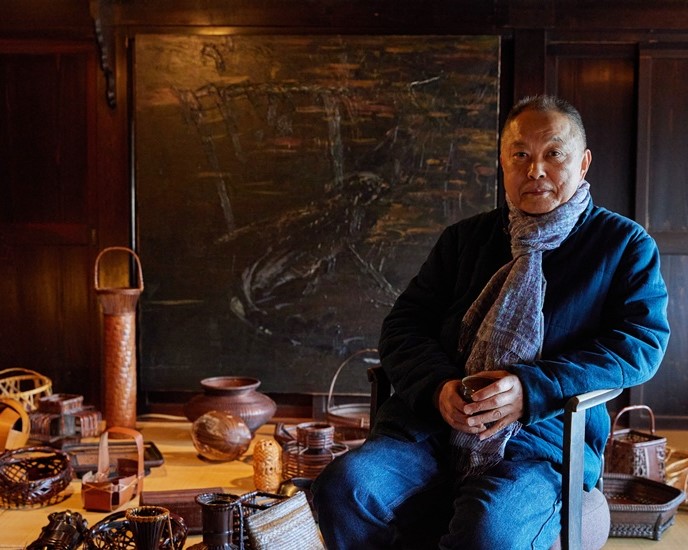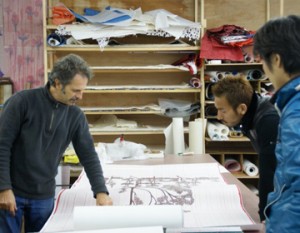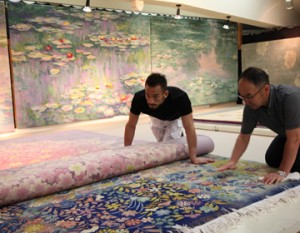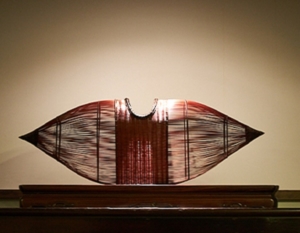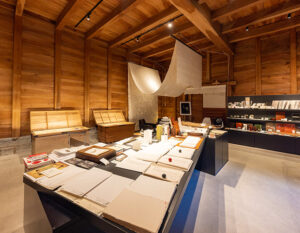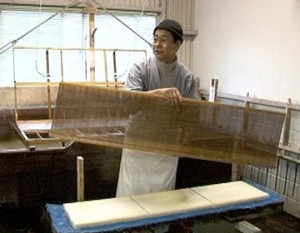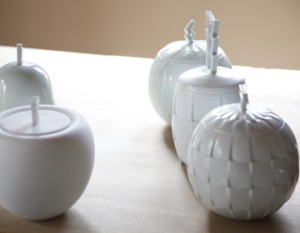A world-renowned collector of bamboo crafts resides in Shioya Town, Tochigi Prefecture. They gather artworks, folk crafts, clothing, and decorative items from ancient to contemporary times, sourced from regions outside Europe, and exhibit their collection at the Musée du Quai Branly in Paris. Additionally, they have contributed significantly to the Metropolitan Museum of Art in New York, known for hosting one of the world’s largest exhibitions on bamboo baskets.
“What kind of person is Masamitsu Saito, the bamboo craft collector?”
Masamitsu Saito, the bamboo craft collector, has a diverse background. In addition to the aforementioned museums, he has coordinated exhibitions such as the “Bamboo Sculpture: The Lloyd Cotsen Collection Exhibition,” held in six locations across Japan, including Tokyo and Oita, which showcased the pioneering Japanese bamboo craft collector Lloyd Cotsen’s collection. He has also been involved in coordinating exhibitions at art museums both domestically and internationally. Furthermore, he has contributed to numerous publications and media programs, including NHK’s “Bijutsubako” series featuring bamboo baskets.
He was born and raised in Shioya Town, Tochigi Prefecture, Japan.

Mr.Saito, one of the world’s leading collectors of bamboo crafts, was born and raised in Shiotani Town, Tochigi Prefecture. Shiotani Town, located at the foot of Takahara Mountain, which spans the surrounding areas of Nikko, Nasu-Shiobara, and Yaita, is known as a village of springs. Takahara Mountain is designated as one of the “Top 100 Forests for Water Source Conservation” and boasts “Shojin-sawa Springs,” selected as one of Japan’s top 100 famous waters by the Ministry of the Environment, making it a land abundant with some of Japan’s finest water sources.
During a visit to the mountainside of Shiotani, the curator of Le Blanc-Ri.

In this lush greenery, where the original landscape of the Satoyama remains, stands a traditional Japanese house, which serves as Saito’s base in Tochigi. Within the space of this old house, collections perfectly suited to its atmosphere were carefully arranged. As I gazed in admiration at the beautiful bamboo baskets, he shared a surprising revelation: “The curator of Le Blanc-Ri Museum also came here and selected baskets.” It’s hard to imagine that in this remote corner of Tochigi, discussions and selections for an exhibition that would attract attention from around the world were taking place.
Japanese bamboo craftsmanship, which has been admired since the Edo period.

Baskets have long been used as everyday items, but the baskets collected by Mr. Saito are of a different lineage. They are called “hanagago” and are said to have originated from China during the Muromachi period. Hanagago brought in from China were referred to as “karumono” and became popular as utensils for sencha from the end of the Edo period to the Meiji period. However, due to their popularity, there was a shortage of them, prompting Japanese artisans to create imitations of karumono. According to Mr. Saito, it was the practice of engraving the name of the artist on the hanagago, made more delicately than the karumono, that marked the beginning of Japan’s bamboo craft. These baskets, elevated from everyday items to works of art, began to be exported overseas from the Edo period. Seibo’s collection also includes many Japanese bamboo baskets, indicating that Japanese-made baskets are still highly regarded worldwide, as evidenced by their presence in the National Museum of Ethnology in Leiden, Netherlands.
Why is Tochigi Prefecture famous for bamboo carefts?

Actually, Tochigi Prefecture is one of the well-known places in Japan for bamboo craftsmanship. One reason for this could be attributed to the renowned bamboo craft artist, Rokansai Iizuka, who was born in Tochigi City in 1890 and flourished before and after the war. The Iizuka family had been bamboo craftsmen for generations and were a well-known basket-making family in the area. His father was the first-generation Houzai Iizuka, and his brother was the second-generation Houzai Iizuka. There were many disciples and followers of the Iizuka family in Tochigi, which further spread their craft. It’s believed that this extensive network of disciples and the family’s reputation contributed to Tochigi Prefecture becoming famous for bamboo craftsmanship.
What kind of baskets and bamboo craftsmanship does Rokansai Iizuka create?
Rokansai received a bronze award at the 1925 Paris Exposition Universelle, and furthermore, exhibited at the 1933 Chicago World’s Fair. He was also known for crafting items used in the enthronement ceremony of Emperor Taisho and presentation items for Emperor Showa. According to research by Mr. Saito, Rokansai’s baskets are unique in that they incorporate foreign elements while being interpreted through a Japanese lens, which sets him apart from other artists. Rokansai’s baskets, which gained fame at the Paris Exposition Universelle, quickly became renowned and garnered attention from overseas.
The job of bringing unknown entities to public awareness in the world of bamboo craftsmanship.

Many of Japan’s old bamboo crafts lack documentation, so while Mr. Saito collected them, he also conducted research. He visited the families of craftsmen who had made the items themselves, gathering data and compiling them to elevate bamboo crafts to the level of fine art, contributing to exhibitions. It’s likely that thanks to Mr. Saito’s efforts, these items became worthy of display in renowned art museums around the world.
From the encounter with bamboo craftsmanship to the journey of collecting

Many of Japan’s old bamboo craftworks lack documentation, so while Mr. Saito engaged in collecting, he also conducted extensive research. He visited the families of craftsmen who had created these artworks, gathering data and compiling them to elevate bamboo craftsmanship to the realm of fine art, actively contributing to exhibitions. It’s likely that thanks to Mr. Saito’s efforts, these items became valuable pieces worthy of display in renowned art museums around the world.
From the encounter with bamboo craftsmanship to the process of collecting
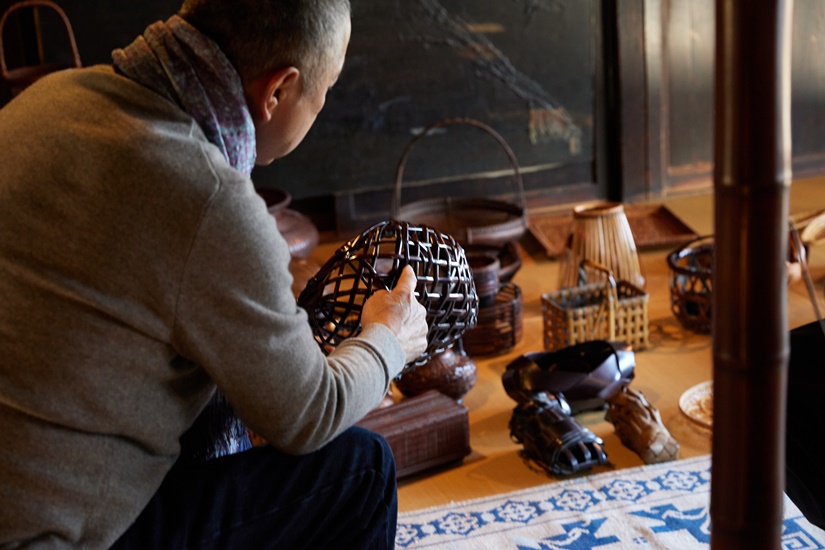
Mr.Saito, who is now active worldwide, began collecting bamboo craftworks about 40 years ago, starting with an encounter with a basket maker by chance. “The basket he showed me was so beautiful that it looked like a contemporary artwork,” he said. Thinking that the artist was creating contemporary art, he was surprised to learn that the artist knew nothing about contemporary art. “Even without knowing contemporary art, he could create such beautiful things!” Mr.Saito was shocked and intrigued, and from there, his long journey of collecting began.
Rather than just gathering objects, he wants to convey the essence of the objects.
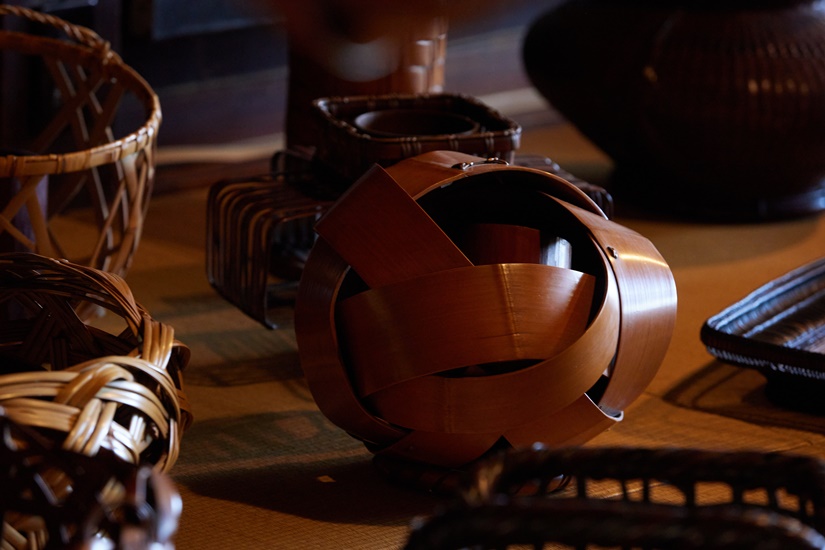
When Saito-san first saw the basket, he felt a sense of “wonderful and high-level craftsmanship and aesthetic beauty,” which convinced him that it surpassed contemporary artworks. He had the idea that it would be interesting to bring this basket into the context of contemporary art. From there, he began activities such as holding exhibitions of bamboo craft artists in contemporary art galleries. He discovered that there were many people in the United States who were also collecting bamboo baskets, which became an opportunity for connection. As he deepened his interactions with them, he became influenced by them, and his collecting continued to progress further. Before he knew it, 40 years had passed. He said, “I collected to hold exhibitions, but perhaps the desire to convey was stronger than the desire to collect.”
Saito-san had knowledge of promotion from his experience working for a record company in his 20s. Using this know-how, he intentionally utilized the media for promotion, such as featuring exhibitions on television and in magazines, which led to the success of his exhibitions. The secret to spreading the charm of bamboo craftsmanship from a time when it wasn’t as well-known might lie in this approach. While there were undoubtedly challenges, he said with a smile, “In the end, I kept doing it because it was fun.”
I want to attract people from overseas and within the country by revitalizing the Satoyama area, focusing on old folk houses

Mr.Saito mentions that Japan is likely the only country in the world that handles bamboo, a supple and delicate material, as a craft. However, he notes that it is mainly foreigners who collect bamboo craftworks. This is attributed to the collection of the late Lloyd Cotsen, primarily in the United States, which helped convey the splendor of bamboo craftsmanship to people. The collection has since been donated to the Asian Art Museum in San Francisco, where it can still be viewed today. As a result, there has been an increase in collectors in the United States, Europe, and across Asia, including China. Taking all this into account, Saito-san expresses a desire to enhance the value of bamboo craftsmanship as fine art and explore various avenues to challenge the market.
Bamboo craftsmanship collaborating with fashion and architecture.

Bamboo craftsmanship is seen as applicable to textiles and architecture as well, with plans for collaborations with fashion and architectural projects in mind. This involves proposing ideas to artists, placing orders, and exploring the infinite possibilities of bamboo. Yet, the hope is also for it to remain familiar and accessible. Bamboo craftsmanship requires technical skill, is challenging to produce in large quantities, and is expensive. By combining it with different materials and designs, the aim is to make bamboo craftsmanship more accessible and contemporary. Emphasizing concepts and designs, the goal is to attract young people to the world of bamboo craftsmanship and expand its reach with rich ideas.
The ideal place for a bamboo basket is where it naturally belongs.

Bamboo craftsmanship is envisioned to resonate with textiles and architecture, and plans for collaborations with fashion and architectural projects are underway. This involves proposing ideas to artisans, commissioning work, and exploring the boundless potential of bamboo. Yet, there’s a desire for it to remain accessible and familiar. Bamboo craftsmanship demands technical expertise, is challenging to produce in large quantities, and is costly. By integrating it with different materials and designs, the aim is to make bamboo craftsmanship more approachable and contemporary. Emphasizing concepts and designs, the goal is to engage young people and expand the world of bamboo craftsmanship with innovative ideas.
The ideal place for a bamboo basket is where it naturally belongs.

Mr.Saito expresses his desire for not only collectors seeking bamboo craftsmanship but also all foreigners and Japanese people interested in it to see the “ideal form” of baskets. The “ideal form,” in essence, is a portrayal that naturally fits into the landscape of Satoyama, such as the scenery preserved in Shibata Town. It evokes a nostalgic image of traditional Japanese landscapes. To realize this vision, he aims to develop and attract people to this old folk house and its surroundings. Saito-san’s dream of making the world of bamboo baskets more accessible is immeasurable.



